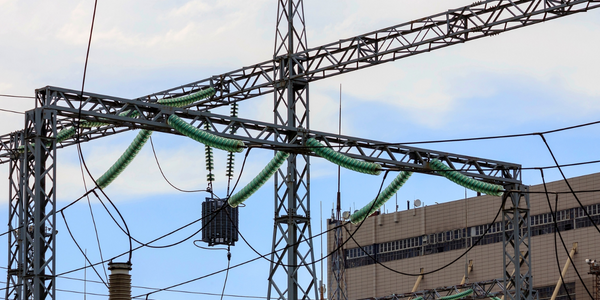Technology Category
- Functional Applications - Computerized Maintenance Management Systems (CMMS)
- Networks & Connectivity - Network Management & Analysis Software
Applicable Industries
- Electrical Grids
- Telecommunications
Applicable Functions
- Maintenance
Use Cases
- Behavior & Emotion Tracking
- Leakage & Flood Monitoring
About The Customer
Alaska Communications is an internet service provider (ISP) that supports communications infrastructure in Alaska. The company provides critical network services to customers, often in remote locations. They were in the process of developing plans for a new site located on a mountaintop, which presented unique challenges due to its remote location and difficult access. The company needed a solution that would allow them to manage and maintain the site remotely, without the need for costly and potentially dangerous trips to the location.
The Challenge
Alaska Communications, an internet service provider (ISP) in Alaska, was facing a significant challenge in managing and maintaining a new site located on a remote mountaintop. The site was only accessible by helicopter and completely inaccessible in poor weather conditions. The company needed to ensure uninterrupted service to the location without having to make the costly and sometimes dangerous trek to the top of the mountain. The challenge was to find a solution that would allow them to manage their network remotely, monitor performance, and ensure all devices within their network were up and running.
The Solution
Alaska Communications turned to Intermapper, a powerful network monitoring solution from Fortra. Intermapper provided the team with greater visibility into their network infrastructure, allowing them to see the full picture of how the site was operating. With Intermapper Remote Access, they could monitor performance and manage their network from anywhere. The solution allowed them to map all the devices within their network to ensure everything was operational. The status of all remote power feeds, heaters, transfer switch positions, power, voltage, oil pressure, fuel level, and more were available on a dashboard using a computer or smart phone with Insite for Intermapper. Alaska Communications was also able to integrate Intermapper directly with their telecom site automation application, SiteBoss. Coupled with Intermapper’s monitoring and alerting capabilities, they could send automatic alerts to their chopper service if the site went down or was on the verge of a power failure.
Operational Impact
Quantitative Benefit

Case Study missing?
Start adding your own!
Register with your work email and create a new case study profile for your business.
Related Case Studies.

Case Study
Hydro One Leads the Way In Smart Meter Development
In 2010, Ontario’s energy board mandated that time-of-use (TOU) pricing for consumers be available for all consumers on a regulated price plan. To meet this requirement, Hydro One needed to quickly deploy a smart meter and intelligent communications network solution to meet the provincial government’s requirement at a low cost. The network needed to cover Hydro One’s expansive service territory, which has a land mass twice the size of Texas, and its customers live in a mix of urban, rural, and remote areas, some places only accessible by air, rail, boat or snowmobile. Most importantly, the network needed to enable future enterprise-wide business efficiencies, modernization of distribution infrastructure and enhanced customer service. To meet these needs, Hydro One conceptualized an end-to-end solution leveraging open standards and Internet Protocols (IP) at all communication levels. The utility drew upon industry leaders like Trilliant to realize this vision.

Case Study
Selling more with Whirlpool
Whirlpool wanted to add connectivity to appliances and transform the company's relationship with customers. Traditionally, Whirlpool interaction with customers was limited to purchases made once every ten years. Connected washer and dryers provide exciting new features like remote management of start times and inter-machine communication.

Case Study
SAS® Analytics for IoT: Smart Grid
Companies face falling revenues, rising infrastructure costs, and increasing risk of outages caused by inconsistent energy production from renewable sources. Less money is coming in as more people and organizations take steps to curb their energy use. Utilities are paying more to maintain and build infrastructure due to increasing complexity, resulting from the rising number of intermittent and variable renewable energy sources connected in the distribution grid.

Case Study
Enel Secures Italian Power Generation Network
Electric energy operators around the world are working to increase the reliability and cyber resiliency of their systems. This includes Enel, a global power company that manages and monitors the Italian power grid. This grid:• Serves 31 million customers• Has a net installed energy capacity exceeding 31 gigawatts• Includes more than 500 power generation plants,including hydroelectric, thermoelectric, and wind• Is managed and monitored by Enel 24/7/365• Is operated by Terna, the Italian Transmission System Operator (TSO)Enel is responsible for the availability of the grid’s underlying ICS and industrial network. It also manages Regional Control Centers and Interconnection Centers which connect with the TSO. The TSO manages the flow of energy to the grid plus controls and remotely regulates the power generation of power plants, increasing and decreasing power production as required. The complex system of interaction and cooperation between Enel and the TSO has strong security implications as well as operational and business challenges.

Case Study
Vodafone Hosted On AWS
Vodafone found that traffic for the applications peak during the four-month period when the international cricket season is at its height in Australia. During the 2011/2012 cricket season, 700,000 consumers downloaded the Cricket Live Australia application. Vodafone needed to be able to meet customer demand, but didn’t want to invest in additional resources that would be underutilized during cricket’s off-season.








